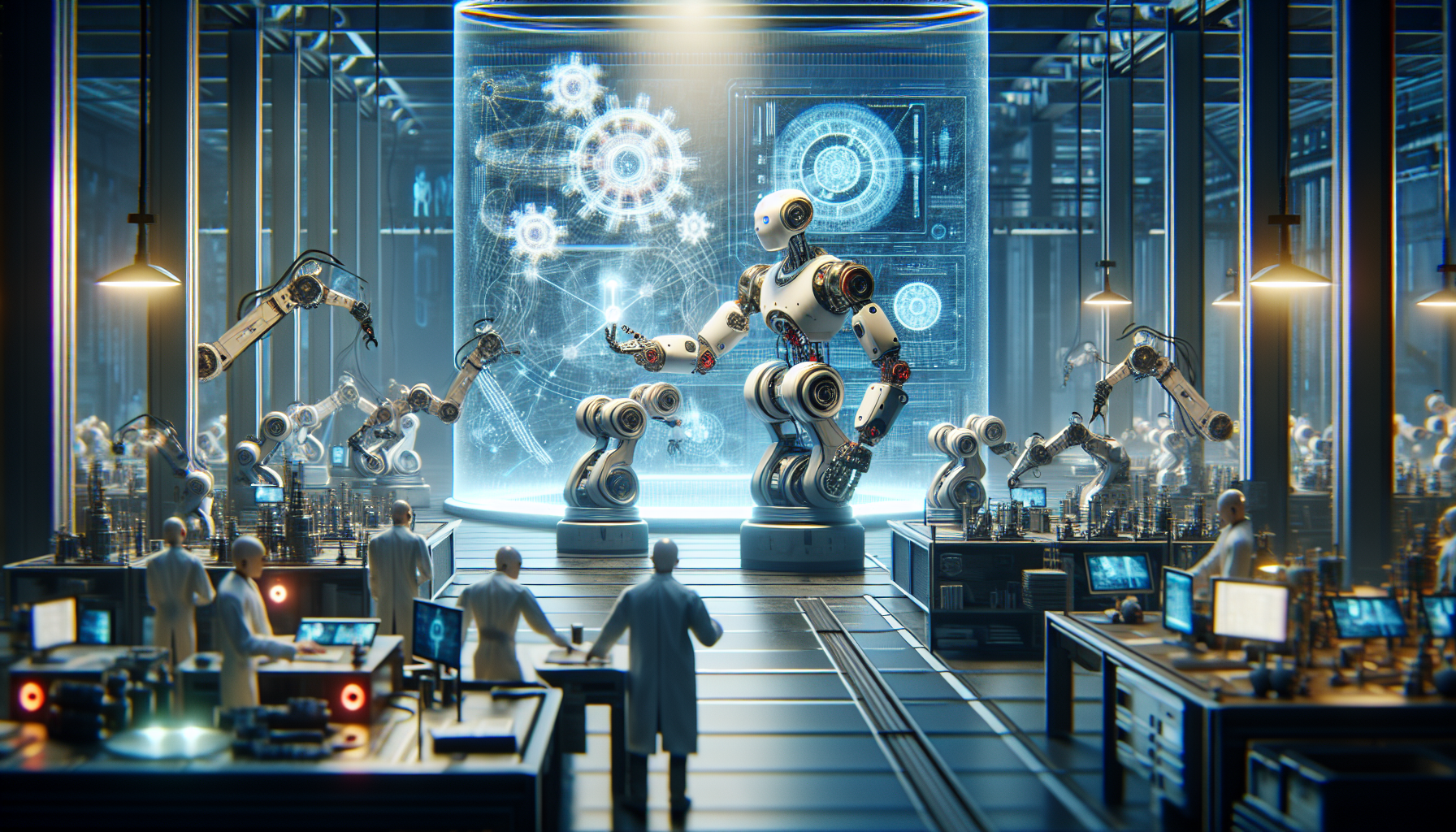What are Autonomous Robots?
The Basics of Autonomy
Autonomous robots are machines designed to perform tasks without constant human intervention. These robots are equipped with advanced sensors, artificial intelligence, and machine learning algorithms that allow them to navigate and operate in a variety of environments. Their ability to make decisions based on real-time data is what sets them apart from traditional robotic systems.
Key Technologies Driving Advances
Artificial Intelligence
AI is at the heart of autonomous robotics. Through machine learning and deep learning algorithms, robots are learning from experience, which enables them to improve their performance over time. This technological leap allows robots to understand complex situations and make decisions similar to human reasoning.
Computer Vision
Computer vision technology allows robots to interpret and understand visual data from the world around them. By processing images from cameras and sensors, robots can identify objects, track movements, and even recognize faces. This capacity is crucial for many applications, from autonomous vehicles to drones used for delivery.
Sensor Technology
Robots now come equipped with various sensors, including LIDAR, ultrasonic, and infrared, providing them with 360-degree awareness of their environment. This sensory input allows for better navigation and obstacle avoidance, making autonomous robots much more efficient and safer during operation.
Real-World Applications
Manufacturing and Industry
Automated Assembly Lines
In factories, autonomous robots are revolutionizing production lines. These robots can perform repetitive tasks with precision, allowing for increased efficiency and reduced labor costs. They can adapt to changes in production schedules and are often integrated with IoT systems to optimize workflow.
Quality Control
Using computer vision, autonomous robots are capable of inspecting products for defects. They make real-time decisions based on visual data, ensuring that only high-quality items reach consumers. This kind of quality control not only enhances productivity but also builds trust in the products being manufactured.
Healthcare
Surgery Assistance
Robots are increasingly being used in surgical procedures. They assist doctors by offering greater precision and reducing the risk of complications. For instance, robotic surgical systems can execute complex surgical tasks with minimal invasiveness, leading to faster recovery times for patients.
Patient Care
In elderly care, autonomous robots can help monitor patients, dispense medication, and even provide companionship. These robots utilize AI to adapt their responses based on the patient’s needs, ensuring a more personalized healthcare experience.
Transportation
Self-Driving Vehicles
Self-driving cars have been one of the most talked-about examples of autonomous robotics. Companies like Tesla and Waymo have made significant strides in developing vehicles that can navigate without human intervention. These cars use a combination of LIDAR, cameras, and advanced algorithms to safely traverse complex environments.
Drones for Delivery
Drones are an exciting application of autonomous robots. Many companies, including Amazon, are exploring the use of drones for last-mile delivery. These flying robots can quickly transport goods, reducing delivery times and lowering transportation costs, particularly in urban areas.
Challenges and Ethical Considerations
Safety Concerns
As autonomous robots become more prevalent, safety concerns arise. Ensuring that these robots can operate without endangering humans is paramount. Developers are working tirelessly to create fail-safes and robust systems that can react appropriately in unexpected situations.
Ethical Dilemmas
The rise of autonomous robotics prompts various ethical questions. Who is responsible if an autonomous vehicle causes an accident? What happens if a healthcare robot makes an error in treatment? These are questions society must grapple with as we integrate robots into everyday life.
The Future of Autonomous Robotics
Enhanced Human-Robot Collaboration
Future trends indicate a shift towards robots that work alongside humans rather than replacing them. Cobots, or collaborative robots, are designed to assist workers in manufacturing and healthcare, combining the efficiency of robots with human creativity and adaptability.
Expanding into New Industries
The applications for autonomous robotics are expanding beyond manufacturing and healthcare. Industries such as agriculture are beginning to embrace robotic technology for tasks like planting, fertilizing, and harvesting crops. These machines can assess soil conditions, monitor crop health, and optimize yields.
Integrating with Smart Environments
With the growth of smart cities and smart homes, autonomous robots will increasingly integrate with various smart systems. This integration will allow for seamless cooperation between devices, enabling efficient resource management and improved quality of life.
Conclusion
While we can’t provide final thoughts on this topic, it’s clear that autonomous robotics are revolutionizing numerous areas of life. The advancements being made are only the beginning of what could be a remarkable evolutionary step in technology, promising to reshape industries and daily living in ways we are just beginning to comprehend.
